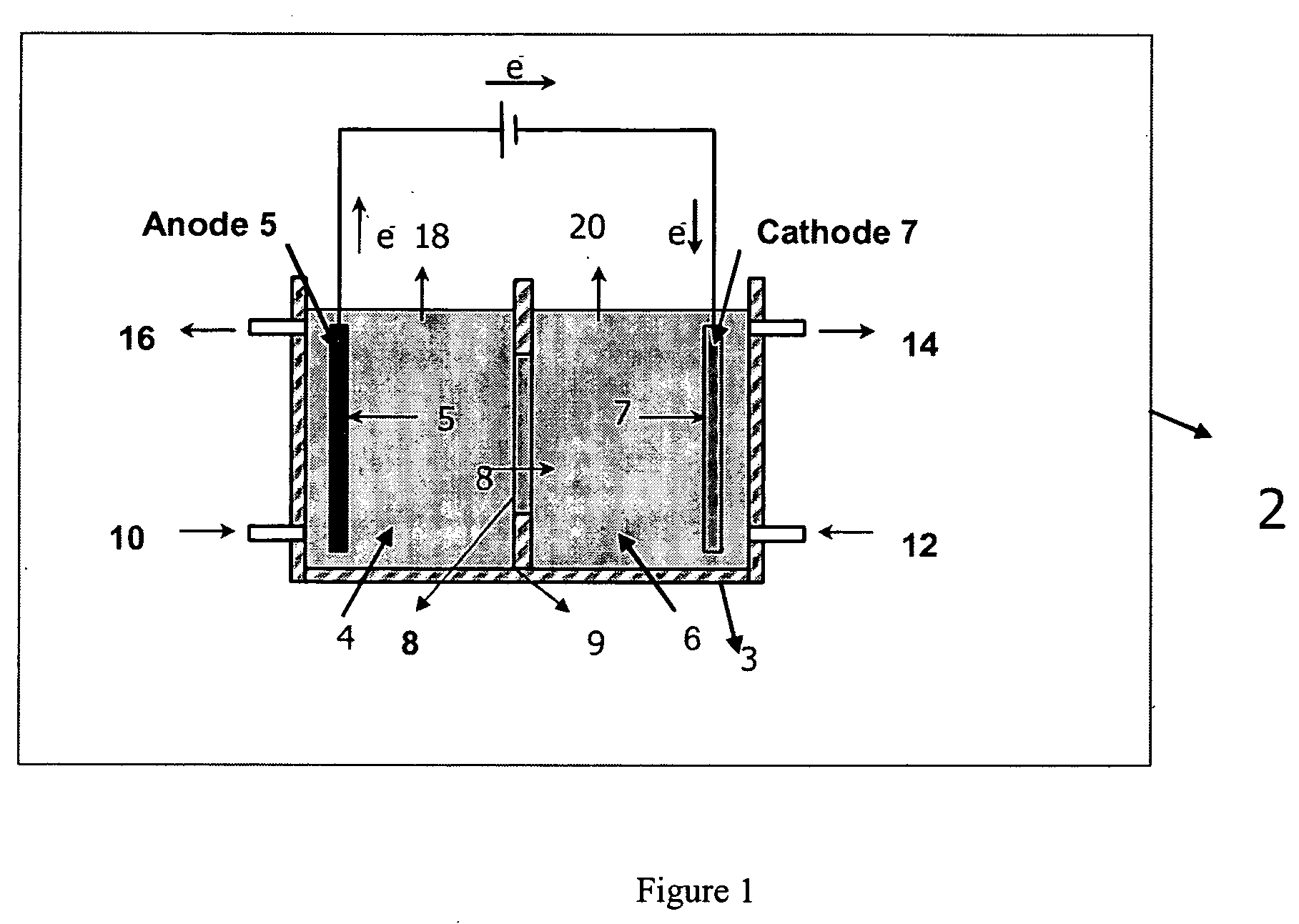Electrolytic method to make alkali alcoholates using ceramic ion conducting solid membranes
a technology of ceramic ion conducting solid membranes and electrolysis methods, which is applied in the direction of diaphragms, membranes, cells, etc., can solve the problems of mercury contamination of the product and the environment, sodium metal reacting violently with water, and difficult control of the process
- Summary
- Abstract
- Description
- Claims
- Application Information
AI Technical Summary
Benefits of technology
Problems solved by technology
Method used
Image
Examples
example 1
[0076] Three of Ceramatec's coded membrane compositions, among the family of NASICON membranes (NASD, NASE, and NASG) were evaluated in single membrane cells, to synthesize sodium methoxide from caustic and methanol. Individual, 900 microns thick single membrane (14.27 cm2 area) was assembled in a two compartment open cell with platinum electrodes. The cells were operated at a temperature of 24° C. at constant current density of 100 mA / cm2. The voltage (IR) drop across the membrane was measured with lugging capillaries set up. The concentration of the starting catholyte solution was 9.5 wt % sodium methoxide in methanol. The solution was prepared by mixing crystals of sodium methoxide from vendor with methanol. The resulting starting solutions were slightly yellowish in color.
[0077] The performance of two independent cells tested with the NASE and NASG membranes is graphically shown in FIG. 3. The NASG membrane has a lower voltage drop across the membrane compared to the NASE membr...
example 2
[0078] An experiment was performed to determine the ionic resistance of sodium methoxide as a function of operating parameters such as concentration, temperature, and electrode distance. An open cell was assembled with no membrane between the electrodes. An electrode spacing apparatus was used to adjust the distance between electrodes. Sodium methoxide solutions at 20, 25, and 30 wt % grades were prepared and their resistances were measured at three different temperatures (25, 30, and 40° C.) using the A.C. impendence spectrometry.
[0079] The results are shown in FIG. 4. The biggest contributor to the overall resistance of the cell is the sodium methylate solution. The solution resistance ranges from 5 to 70 ohms depending on the operating parameters. The tests show that the electrical conductivity of the sodium methylate solution is function of concentration and temperature of the solution.
example 3
[0080] An experiment was conducted to evaluate the effect of flow rates of anolyte and catholyte, and electrode distance from the membrane on cell performance. This test was conducted in a standup closed laboratory-scale cell, such as the commercial Electro Cell MP (Chematur Engineering AB, Karlskoga, Sweden). The electrodes were initially placed at approximately 0.5 cm away from the membrane on either side. Using a peristaltic pump, the initial flow rate was set at 2.5 setting on the pump speed controller and the cell was operated until steady voltage was achieved. The flow rate was then increased to the 7.5 setting on the speed controller.
[0081] The results and other details of the experiment are shown in FIG. 5. The total voltage of the cell drops as the flow rate of the solution increases due to better dissipation of gases evolved at the electrodes, contributing positively to the overall cell operation and the conductivity of solutions.
PUM
| Property | Measurement | Unit |
|---|---|---|
| current density | aaaaa | aaaaa |
| current density | aaaaa | aaaaa |
| pH | aaaaa | aaaaa |
Abstract
Description
Claims
Application Information
 Login to View More
Login to View More - R&D
- Intellectual Property
- Life Sciences
- Materials
- Tech Scout
- Unparalleled Data Quality
- Higher Quality Content
- 60% Fewer Hallucinations
Browse by: Latest US Patents, China's latest patents, Technical Efficacy Thesaurus, Application Domain, Technology Topic, Popular Technical Reports.
© 2025 PatSnap. All rights reserved.Legal|Privacy policy|Modern Slavery Act Transparency Statement|Sitemap|About US| Contact US: help@patsnap.com



